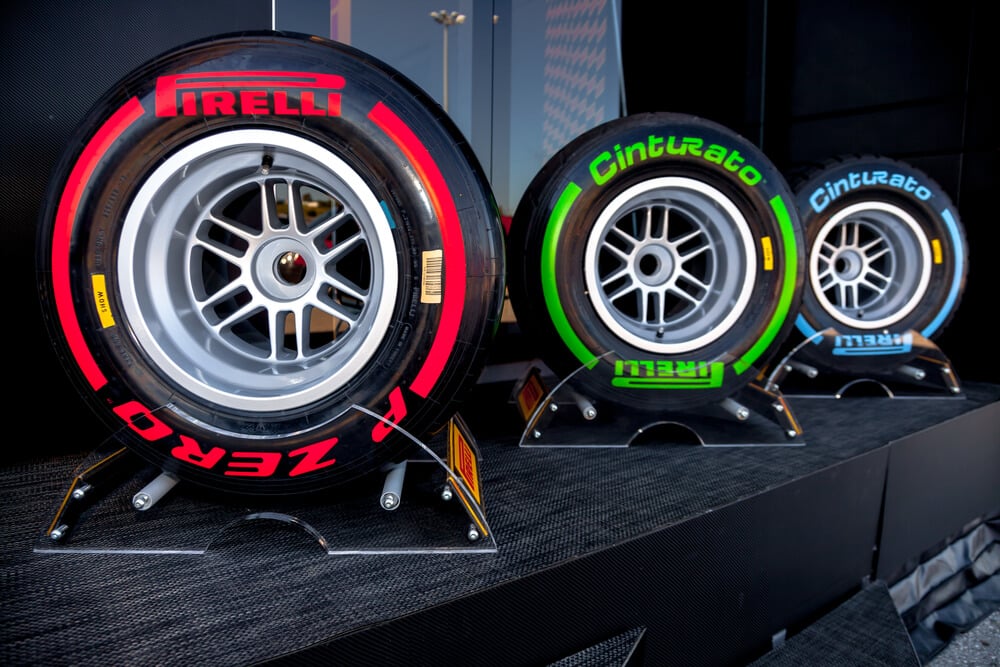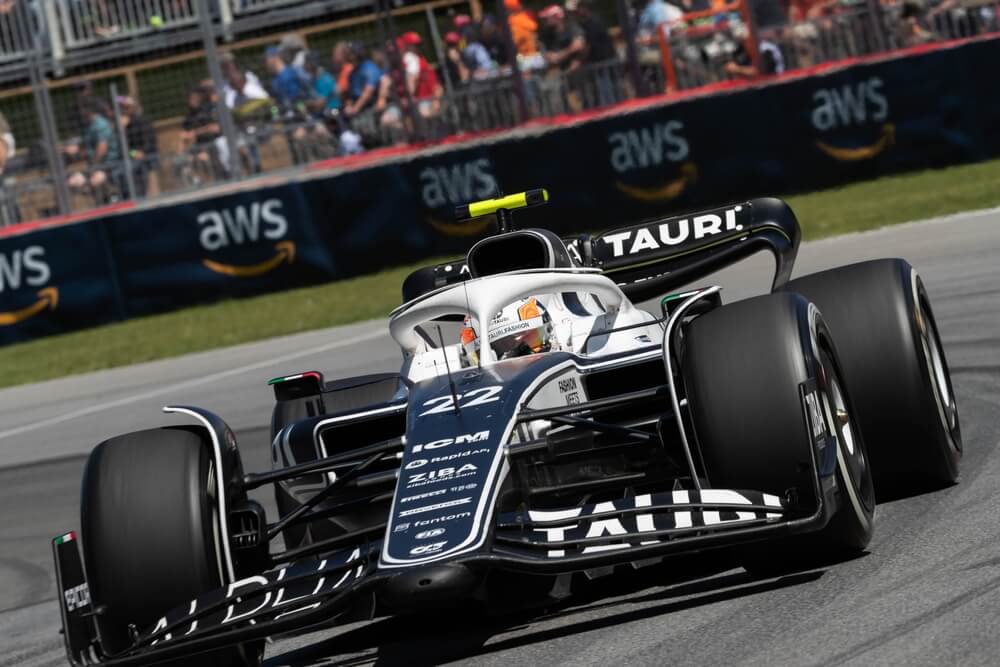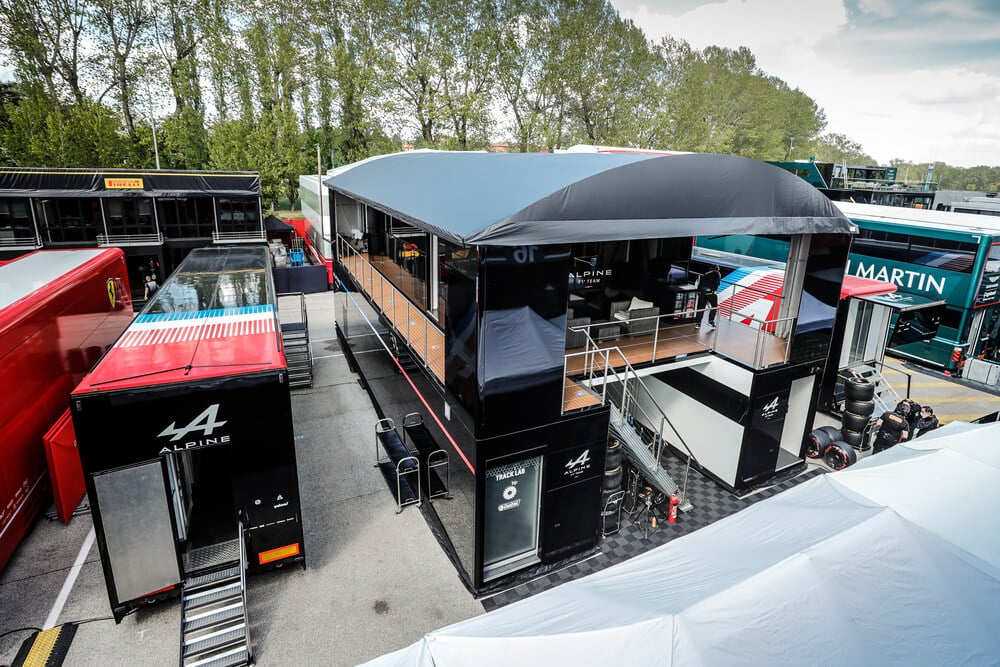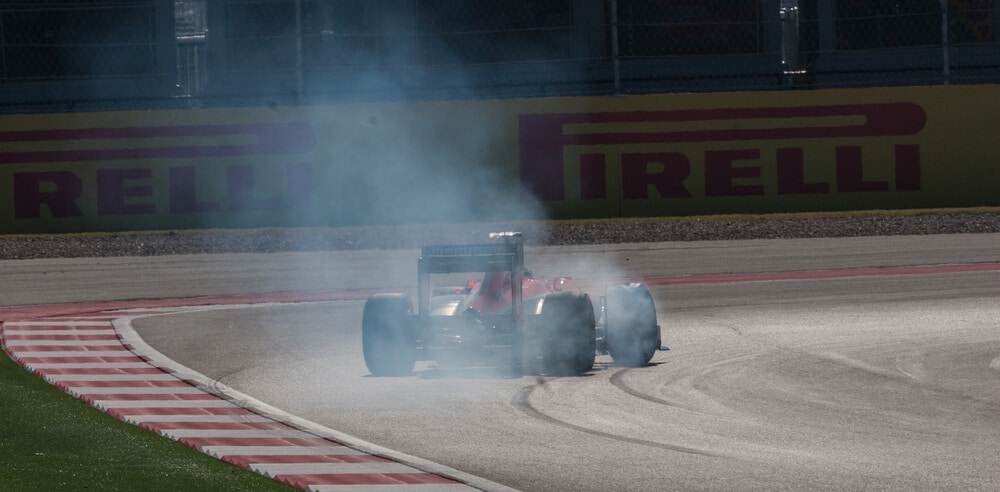Slicks are an integral part of Formula One racing, providing the essential link between the car and the track. These tires, as the name suggests, have a smooth surface without any tread pattern, allowing them to grip the track surface better.
Slick tires were first introduced in Formula One in the 1960s, replacing the previously used grooved tires.
Over the years, slick tires have undergone significant changes in design, construction, and compound composition, leading to better performance and faster lap times.
Understanding the technical aspects and strategic use of slicks is critical for success in Formula One racing.
Table of Contents
Watch this video to learn more about the different types of tires used in Formula One.
What are “Slicks” (Slick Tires)
Slick tires are racing tires with a smooth surface that provide maximum contact between the tire and the track. They were introduced in Formula One to replace the grooved tires used in the past.
The smooth surface of slicks allows for increased grip and better performance on dry track surfaces. That’s why F1 cars drives with bald tires.
The design and construction of slick tires have evolved over the years, and different tire compounds are used for various racing conditions.
Tire pressures and heat management are also crucial aspects to consider for optimal tire performance.
Key Takeaways
- Slick tires have a smooth surface that maximizes contact with the track, providing improved grip and traction compared to grooved tires.
- Different types of slick tires, such as soft, medium, and hard slicks, offer different levels of grip, durability, and performance.
- Slick tires require careful heat management, with excessive heat causing tire degradation and reduced grip.
- Tire pressures are critical for slick tires, as lower pressures provide increased grip and higher pressures provide increased stability and reduced tire wear.
- Slick tires have evolved in terms of their design, construction, and performance characteristics over the years.
- Intermediate and full wet tires are also used in Formula One racing for wet weather conditions.
- Slick tires provide the maximum performance and lap times on a dry track.
- Driving on slick tires requires precision and technique, with drivers needing to find the optimal balance between grip, stability, and tire wear to maximize their performance.
History of Slicks
The early days of Formula One racing tires saw the use of grooved tires to provide better grip on wet surfaces. However, as racing moved to dry tracks, grooves became less effective. Slick tires were introduced in the 1960s to maximize grip on dry tracks. These early slicks had a simple design and were made from natural rubber.
The smooth surface of slicks provided increased contact area between the tire and track, resulting in better grip and faster lap times. Slicks soon became the tire of choice for dry track conditions, and their use continues to this day.
Evolution of slick tires over the years
The evolution of slick tires over the years has been significant. Tire manufacturers have experimented with different compounds and designs to improve tire performance.
The introduction of synthetic rubber and carbon fibers has made slicks more resilient and durable, while advanced technologies have improved heat management and tire pressures. The need for more significant durability and the ability to manage different track conditions has led to the development of different tire compounds. These compounds are tailored to specific race conditions, providing optimal grip and performance.
Today, slick tires are designed to provide maximum grip, faster lap times, and better overall performance, making them an essential part of Formula One racing.
Tire compounds and their characteristics
Tire compounds play a vital role in tire performance, with different compounds designed for specific track conditions. Softer compounds provide better grip and performance on hot tracks, while harder compounds offer more durability and performance on cooler tracks.
Heat management is also critical to tire performance, with high temperatures causing tire degradation and reduced grip. Tire pressures are carefully monitored and adjusted to optimize grip, handling, and performance. Tire pressure is affected by temperature, with higher temperatures resulting in increased tire pressure.
Heat management and tire pressures
Heat management is critical for optimal tire performance. Slick tires generate a lot of heat during racing, which can lead to tire degradation and reduced grip. Tire manufacturers design tires to manage heat through various means, including tire construction, compound composition, and air flow.
Tire pressures are also crucial for managing heat and tire performance. Low tire pressures can cause excessive tire wear, while high tire pressures can lead to reduced grip and handling. Tire pressures are carefully monitored and adjusted throughout a race to optimize tire performance.
Read our article about: How much an F1 tyre costs.

Performance
Slick tires provide a significant improvement in performance compared to grooved tires. The smooth surface of slicks maximizes contact with the track, resulting in improved grip and traction.
This improved grip allows for faster acceleration and higher top speeds, making slicks essential for Formula One racing.
Improved grip and traction
Improved grip and traction are the most significant advantages of using slick tires. Slicks provide better contact with the track, resulting in faster acceleration and improved cornering speeds. Slicks also provide improved stability during high-speed cornering, allowing drivers to push their cars to the limit.
Lap times and cornering speeds
Lap times and cornering speeds are significantly improved with slick tires. The increased grip and traction provided by slicks result in faster lap times, making them essential for Formula One racing. Slicks also provide improved cornering speeds, allowing drivers to take corners at higher speeds and reduce lap times.
Challenges of driving on slicks
Driving on slicks presents several challenges, even for experienced drivers. Slicks offer little to no grip on wet surfaces, making them unsuitable for wet racing conditions. Slicks also require careful heat management, with excessive heat causing tire degradation and reduced grip.
The lack of tread pattern on slicks also makes them susceptible to aquaplaning on wet surfaces, posing additional challenges to drivers. Understanding the challenges of driving on slicks is essential for maximizing their benefits and ensuring optimal performance.
Different types of Slicks
There are different types of slick tires designed for specific track conditions and performance requirements. Each type of slick tire has a unique construction and compound composition, resulting in different levels of grip, durability, and performance.
Soft
Soft slicks offer maximum grip and performance on hot tracks. They provide excellent traction and cornering speeds, making them ideal for high-speed racing conditions. However, they have a limited lifespan and require careful heat management.
Medium
Medium slicks offer a balance between grip and durability, making them suitable for a wide range of track conditions. They provide consistent performance and are less affected by changes in temperature than soft slicks.
Hard
Hard slicks provide maximum durability and longevity, making them suitable for cooler track conditions. They offer less grip and performance than soft and medium slicks, but they are more stable and provide consistent performance over longer distances. Hard slicks are also more resistant to wear and degradation, making them ideal for endurance racing.
Other types of tires
In addition to slick tires, there are two other types of tires used in Formula One racing: intermediate and full wets. These tires are designed for use in wet or changing weather conditions when slicks are unsuitable.
Intermediate
Intermediate tires are designed for use on a damp track with light rain. They have a tread pattern that allows them to displace water and maintain grip on a wet track. They provide more grip and stability than slicks on a wet track but have less grip than full wets.
Full wets
Full wets are designed for use in heavy rain or standing water on the track. They have a deep tread pattern that allows them to displace large amounts of water and maintain grip on a wet track. They provide the maximum grip and stability on a wet track but have a slower lap time compared to intermediate and slick tires.
Frequently asked questions
What is the difference between slick and grooved tires in Formula One racing?
What are the advantages of using different types of slick tires in Formula One racing?
How do drivers manage heat and tire pressures when using slick tires in Formula One racing?
Conclusion
In conclusion, slick tires have been a critical component of Formula One racing for many decades, providing drivers with the necessary grip and traction to achieve maximum performance on the track.
Over the years, slick tires have evolved in terms of their design, construction, and performance characteristics, with different types of slicks now available to suit a wide range of track conditions and racing requirements.
Despite the challenges of driving on slick tires, including the need for careful heat management and tire pressure control, they remain an essential component of Formula One racing, providing drivers with the speed, agility, and control needed to achieve victory on the track. As Formula One racing continues to evolve, it is likely that slick tires will continue to play a vital role in shaping the sport’s future.
Article sources
Learn more about Formula One
Want to learn more about F1? Then visit our Formula 1 glossary and dictionary.



